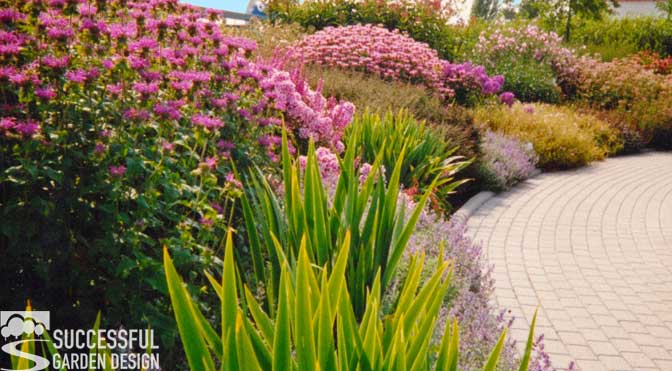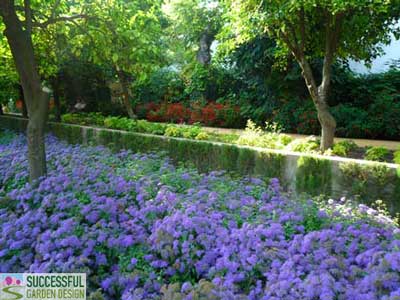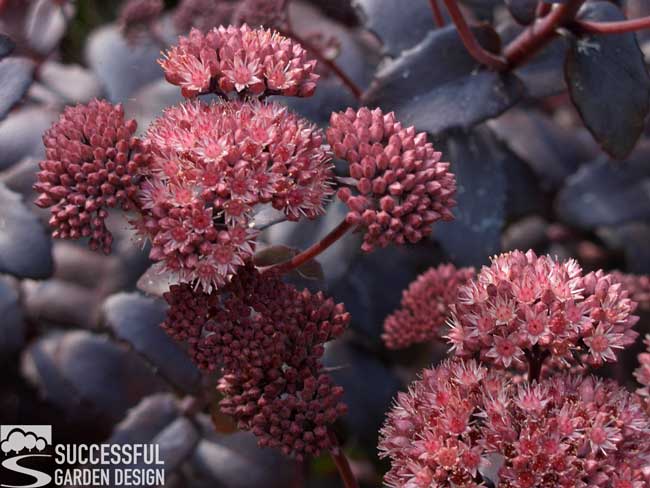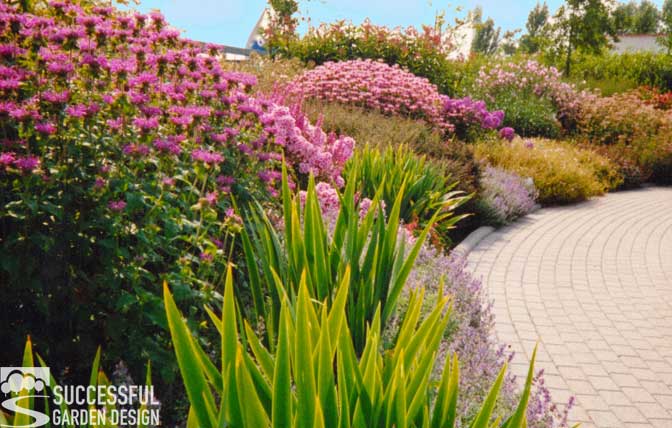 Creating a good planting scheme can be tricky. To help you create a great planting scheme, we’re going to dissect what made the planting scheme so good at the inspirational garden of Alcázar de los Reyes Cristianos in Cordoba, Spain.
Creating a good planting scheme can be tricky. To help you create a great planting scheme, we’re going to dissect what made the planting scheme so good at the inspirational garden of Alcázar de los Reyes Cristianos in Cordoba, Spain.

How to Use Plants Effectively (the Power of One)
The Alcazar garden managed to create a scheme that was brave and bold by using very few plant varieties. Not only did it look amazing but it wasn’t boring, nor did it look like a municipal park.
They had large areas containing just one key plant. Sure, there was a box hedge around it and the occasional use of a different plant, but on the whole, there was one key or ‘Power Plant’.
How Do You Pick Your ‘Power Plant’?
Choosing a power plant is no easy task. Before I list a few of my favourites, let’s define what a ‘power plant’ is. It’s a plant that gives you the most bang for your buck. It doesn’t necessarily have to be evergreen but it does need to look good for a large proportion of the year regardless of whether it’s flowering.

The key to it is to pick plants as they have in the Alcazar Garden in Spain that are slightly unusual, not in the sense that they’re hard to come by, but in the sense that you wouldn’t expect to see that particular plant en masse (like using Celosia instead of Roses as shown in the picture).
Plant Quantity And Repetition Are Also Key

You need to have an area big enough to put in a substantial enough group of the power plant and then still have room for some minor planting. That doesn’t mean to say you can’t do this in a small garden but you basically need an area big enough that you can put more than five of your power plant.
You also need to repeat it in other locations around your garden to create the best effect. If you think about it, mother nature plants in this way and let’s face it, she is the ultimate designer.
My Top 5 Power Plants
This is my current list, which does change quite frequently.
1. Nasella (Stipa) tenuissima – USDA hardiness zones 6-10
 It’s a grass that moves like hair in the breeze and you just want to stroke it (‘pet’ it for my American friends!), and it’s great to show off other plants around it. And I think it looks fantastic planted in big bold groups. They grow best in full sun and well-drained soil. Please note: if you’re in areas like California, it can become invasive.
It’s a grass that moves like hair in the breeze and you just want to stroke it (‘pet’ it for my American friends!), and it’s great to show off other plants around it. And I think it looks fantastic planted in big bold groups. They grow best in full sun and well-drained soil. Please note: if you’re in areas like California, it can become invasive.
2. Agapanthus – zones 7-10

Blue, purple or white flowering varieties are available. The flowers last a fair while and semi-evergreen, strap-shaped leaves and overall form, make this a good plant to have in my book. They prefer full sun and a free-draining soil but I’ve grown them successfully in quite a heavy clay soil and in dappled light.
3. Perovskia Blue Spire – zones 5-9

The Russian sage has white stems with greyish/blue foliage which are scented and stunning purple/blue flowers. I use this plant more at the middle to back of borders as it can get ‘leggy’ and need other plants for support. Planted in big enough groups, you get clouds of blue in late summer which the bees absolutely love!
The softness of this open but eye-catching plant adds a quality that few other plants can create and it looks fantastic with grasses. Yes, you read it right, soft and fluffy are worthy qualities too! It prefers dry, sunny conditions in well-drained soil. But buyer beware – I’ve been told that in places like New Mexico they can be quite invasive.
4. Hylotelephium (Sedum) Purple Emperor – zones 4-9

The deep purple foliage and pink flowers is a good combination. It’s a good plant to show off other plants around it – the flat-topped flowers make a good change of shape (more on this in the next blog post) in the border. Another one that perfers sun and a well-drained soil to thrive.
5. French Lavender – zones 5-9

I love to see lavender planted in clumps and repeated around the garden, especially when used with grasses and more upright plant forms. It’s another favourite of the bees too!
When choosing French Lavender, it’s best not to go for the Lavendula stoechas but a named variety of it (there are loads to choose from), the original variety is a bit messy can get leggy more easily than some of the newer varieties. Full sun and a free-draining soil are a must for lavenders to thrive.
Before incorporating any of the above in your garden, do check they will be OK with your soil type, location and the general climate.
Watch Rachel demonstrate all the steps to creating a stunning planting scheme…
If you’d like ALL the insider tips on exactly how to put plants together to create stunning schemes that look good all year, including a plant database you can sort by plant colour, growing conditions, height, hardiness etc. then take a look at the Plant Design Formula.

16 replies to "What Makes A Planting Scheme Great?"
[…] This post was mentioned on Twitter by Amy Harrison, Rachel Mathews. Rachel Mathews said: RT @successfulgardn What Makes A Planting Scheme Great? https://retwt.me/1Piw7 […]
I need to redo a small (approx 6 feet x 6 feet; let’s call it 2 meters x 2 meters) flower bed in the Spring.
You said, “That doesn’t mean to say you can’t do this in a small garden but you basically need an area big enough that you can put more than five of your power plant.”
So how small of an area is too small?
Hi Mike,
Great question, thank you! The answer is dependant on the plants you choose. If you pick a small grass like Festuca glauca you could plant plant 3 per square metre. If the plant you choose is bigger, 1 per m sq is more realistic.
The other part of the equation is patience and time – people don’t always want to wait 5yrs for the plants to fill their allotted space, on those occasions you can plant more in the space (as long as you are prepared to keep them pruned back so you don’t end up with a jungle).
By the sounds of it, your border is going to be too small for 5 of something but you can still achieve nice results with planting in groups of 3 – the plants will start to grow together and look like a more established plant and it will look less fussy than lots of individual plants. I will write more about this in a future blog post, thanks for such a good question!
Thanks Rachel.
The good news is that I can make the area larger so maybe I’ll do that.
Patience is not high on my list of strengths so I’d probably plant a few extras to start out 🙂
Hi Rachel! Great minds think alike! One of my favorite plants to design with is Mexican feather grass, too (Stipa/Nasella tenuissima)! It works in a variety of landscape styles and is the perfect medium-sized ornamental grass.
I just love your site–when one landscape designer draws in another, you know it’s good! 🙂
Picking “power plants”, and using spaces effectively, simply is SO key. That is what lacks in most landscape designs in New Mexico, especially involving xeric or native plants.
This is quite the battle when designing for many clients here, especially residential ones.
They are still plants, design principles and adaption of those are still paramount. Great website…I can’t wait to explore more! Enjoy my ancestral Mediterranean-Basin homeland!
Thanks David – alas back in the UK now, really missing the sun!
I think people are coming around to using native and non invasive plants now. I’m a great believer in making life easy and using plants that will grow in the conditions we have.
Here in Albuquerque I’ve found Nasella tennuissima to be an aggressive reseeder ( it requires combing out the seed heads before they drop). I tend to use Little Bluestem, Karl Foerster Feather Reed Grass, Sand Lovegrass or several of the Muhly grasses. Also Perovskia tends to send sucker shoots all over unless constricted by a barrier. Maybe those aren’t issues there. The French Lavenders (Grosso and Provence) do very well here as well as does Mexican Blue Sage (Salvia chamaedrioydes ) .
Hi Hunter,
Thanks for your comment, that’s really useful to know. I haven’t experienced those issues here in Spain, though sometimes the Stipa can seed itself a little more than is welcome if it really likes the conditions. We tend to have the opposite problem in the UK with getting those plants to survive all the wet weather and winter months. It’s always best to check that plants won’t become too invasive if they’re well suited to the conditions you have, so thanks for sharing your alternatives.
Best wishes
Rachel
[…] the next blog post we will take a detailed look at what made the planting so effective in this garden. We’ll also discuss how you can create great planting schemes in […]
Hi Rachel
Love the site and the tutorials. Just thinking of your spanish garden: what about Agapanthus Nana ( the dwarf variety) and maybe some Pelargoniums. Ice plants, (Delasperma) or even Lampranthus might work well too. Real gems that I think your ‘plantsman” would love. I work in Cape Town, South Africa, also a Med-type climate and these are a few of the plants that I’ve used in all sorts of soil types, and they’re happy as long as they get enough sun and aren’t too wet for too long. Happy gardening.
Kind regards
Iain
Hi Iain,
Thank you! Some great suggestions there. We did use an Agapanthus but I’m not sure which one as nothing is ever labelled in Spanish garden centres, it’s more of a lucky dip! I’m not familiar with the Lampranthus, so have just looked them up – they look very similar to the Mesembryanthemums they have there. We’ve finished that garden but the top terraces are a struggle, so I will pass on your suggestions.
If you want to see how the finished garden turned out, take a look at: https://www.successfulgardendesign.com/small-garden-design-spanish-courtyard-update-part-5/
Love all your 'programmes' on line, Rachel. Cant wait to return from holiday to continue work in our garden. Thank you. Adrianne
I fell in love with Perovskia when I spotted it in my neighbour's garden. I've always had a passion for blue flowers but this is just exquisite. Most of my planting plans involve cornflowers, perovskia, blue irises and lupins, love in a mist, campanula and agapanthus. Is that too much blue?
Hello Rachel
I really do not like purple, so is not a colour I would use in my garden for plants.
Colours I like are yellow, orange and white, so what plant would you suggest for my “power plant” please.
Hi Josephine,
Alchemilla mollis is a good one, a nice acid yellow. I like Viburnum davidii for the white. Orange I would go with kniphofia as it looks so structural.